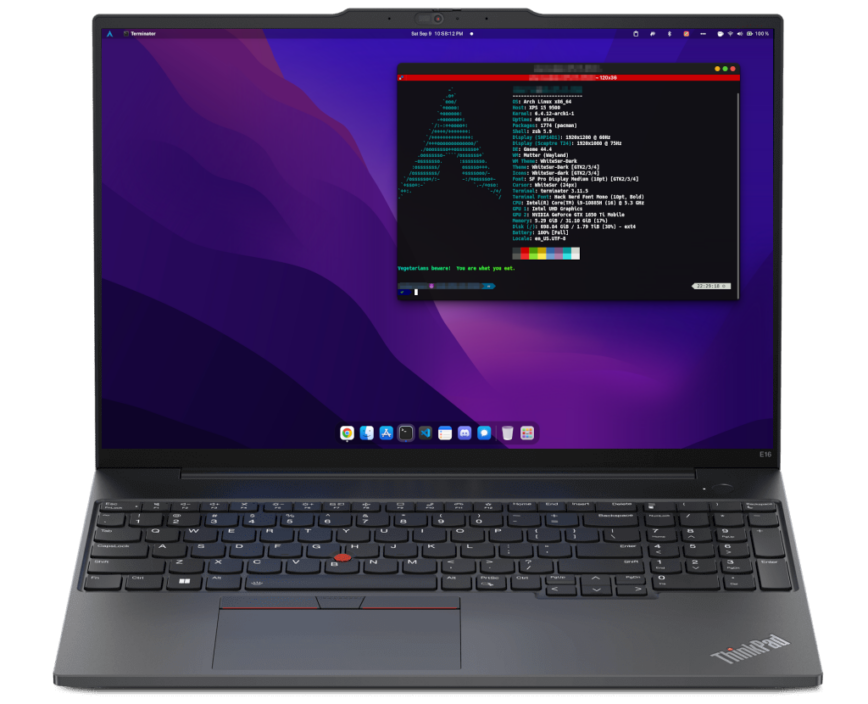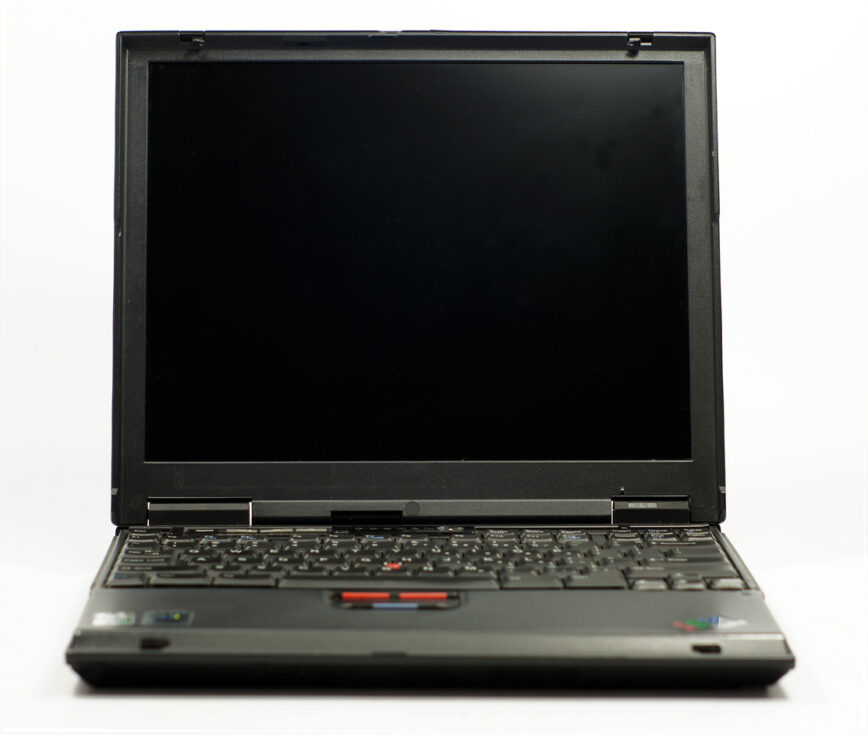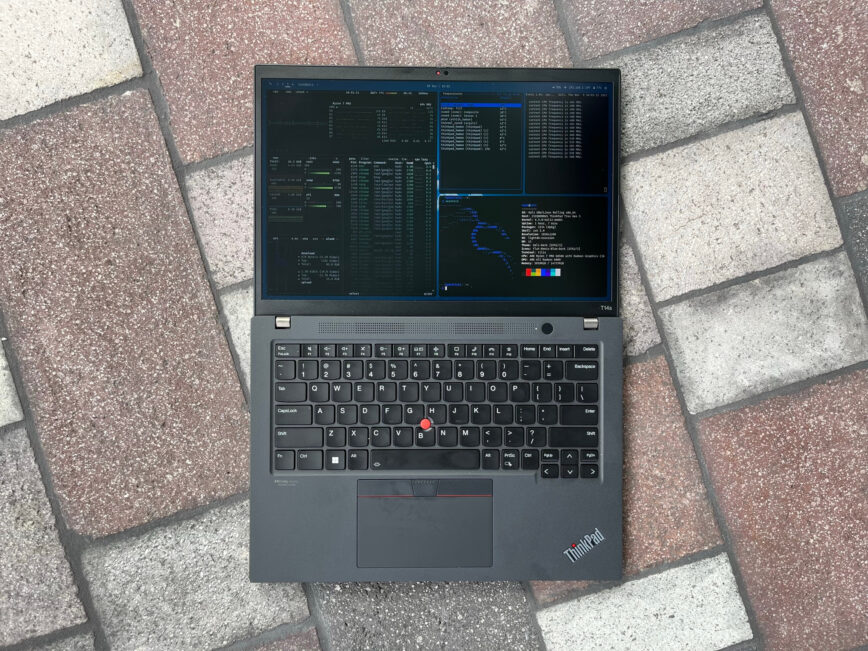ThinkPad Laptops with Linux Guide (2025)
ThinkPad laptops have become synonymous with reliability and innovation in the tech world. As a Linux enthusiast, you understand the importance of selecting the right laptop for your projects, work, and other professional tasks.
In this article, now updated exactly 1 year later—to the day, we’ll look at a recent change Lenovo has implemented in several of their latest ThinkPad models. This update has the potential to reignite interest in ThinkPads, making them a preferred choice among Linux users once again.
“Like me, in recent years, you may have overlooked ThinkPads for Linux.”
Additionally, we will explore the Linux distributions that work best with ThinkPads and provide valuable resources for users interested in installing Linux on their ThinkPad laptops.

The History of the ThinkPad
ThinkPad laptops have a storied history closely tied to their popularity among business professionals and their compatibility with Linux. ThinkPad laptops, initially developed by IBM and later acquired by Lenovo in 2005, have a long-standing reputation for being robust, reliable, and well-suited for business use. Their popularity in the business world can be traced back to their introduction in the early 1990s.
Early Popularity: In the 1990s, ThinkPad laptops gained popularity among business professionals due to their exceptional build quality, ergonomic design, and innovative features. They quickly became a staple in corporate environments.
IBM’s Commitment to Linux: During this period, IBM was also a significant player in the development and promotion of Linux. IBM’s involvement in the open-source community contributed to Linux compatibility on ThinkPad laptops.
Lenovo’s Acquisition (2005): Lenovo’s acquisition of IBM’s PC division didn’t diminish the ThinkPad brand’s appeal. In general, Lenovo continued to focus on the business market and maintained the high-quality standards established by IBM.
Linux Compatibility: ThinkPads have been favored by Linux enthusiasts for their excellent compatibility with various Linux distributions. Lenovo’s commitment to Linux compatibility has made ThinkPads a preferred choice for running Linux.
Linux Certification: Lenovo has actively pursued Linux certification for its ThinkPad models, ensuring that key features like Wi-Fi, graphics, and power management work seamlessly with Linux distributions.
Ubuntu and Fedora Partnership: Lenovo entered into partnerships with Ubuntu and Fedora, two popular Linux distributions, to certify their ThinkPad models for optimal performance. This collaboration further solidified ThinkPad’s reputation in the Linux community.
ThinkPad’s return to production-focused displays
In the past few years, Lenovo has taken a noteworthy step: reintroducing 16:10 aspect ratio displays. Starting around 2020 and continuing to this day, they have progressively transitioned a growing range of models from 16:9 back to the 16:10 aspect ratio screen format that was once widely acclaimed.
My Apologies for being late on this topic. It’s important to discuss this because there might be others who, like me, haven’t considered ThinkPads a viable choice for Linux recently. It took me some time to realize this shift, since I had essentially overlooked and forgotten about ThinkPads, despite having owned multiple IBM/Lenovo ThinkPads in the past.
That said, the 16:9 display take-over was not a dealbreaker for everyone. This article reflects my opinion that 16:10 ratio displays are superior to 16:9.
16:9 displays represent a significant reduction in vertical screen space, which could deter those who value a vertically expanded viewing and reading experience without the need for excessive scrolling.
So, what happened to the taller aspect ratios?

ThinkPads are known for their minimalist, black design, originally modeled in 1990 by Richard Sapper.
In the early years of ThinkPads, IBM/Lenovo offered laptop displays with aspect ratios such as 16:10, 3:2, and 4:3. Personally, I stopped considering ThinkPads as a viable option because of their near-exclusive use of 16:9 aspect ratio display screens.
This shift towards 16:9 displays was initially driven by the multimedia industry, as it matched the aspect ratio of widescreen movies and HDTV content more effectively.
However, it came at the expense of vertical screen space, a drawback for professionals and enthusiasts who valued the additional vertical workspace.
A step back, before going forward.
The subsequent transition to 16:10 displays, as observed in recent ThinkPad laptop models (and others), reflects a response to user demands for more versatile and productive screen formats, particularly for tasks like web development, coding, and document management. Additionally, the success of Apple’s 16:10 MacBook Air and MacBook Pro models have contributed to this trend.
The introduction of 16:9 aspect ratio displays in laptops was akin to the step backward taken with the adoption of the USB Micro (commonly used in Android devices) for charging and data transfer.
Both changes, while touted as innovations at their respective times, posed challenges for users. The 16:9 aspect ratio, with its wider but shorter screen, limited vertical space for multitasking, coding, and reading, which were critical activities for many users, including Linux enthusiasts. Similarly, USB Micro, although compact, was not designed to be reversible, and users need to ensure the correct orientation when plugging in the cable.
In both cases, user preferences and practicality have ultimately driven a return to more accommodating options, such as the 16:10 aspect ratio displays for laptops and USB Type-C for smartphones, laptops, and other devices. These examples act as a reminder that innovation must genuinely cater to user needs in order to propel technology forward effectively.
Over the years, ThinkPad laptops have earned their place in corporate offices, home labs, and home workspaces, offering users consistent performance and longevity.
Some of the more recent generations and releases (series) of the ThinkPad X1 Nano, X1 Carbon, x13, T14, T14s, T16, P14, P14s, P16, and P16s boast the coveted 16:10 screen ratio.
Why Linux, on ThinkPad Laptops?
Linux users often install open-source operating systems (Linux distros) on their laptops to enjoy several key advantages. Unlike proprietary operating systems, Linux allows users full control over their systems, enabling customization and the installation of software tailored to their specific needs.
Recently, popular laptops among Linux users have included models from Dell, Framework, System76, and, notably, ThinkPads by Lenovo.
Some advantages of running Linux on 16:10 aspect ratio ThinkPad models are:
Tiling window managers: The 16:10 aspect ratio stands out as an ideal choice for users who employ tiling window managers such as i3wm. This screen format offers more vertical screen real estate compared to the traditional 16:9 displays. It allows users to comfortably stack and arrange multiple windows vertically, enhancing productivity by providing a comprehensive view of each application or workspace.
Build Quality and Durability: ThinkPads have a long-standing reputation for their robust build quality. Their sturdy construction, spill-resistant keyboards, and military-grade durability make them ideal for users who demand reliability from their laptops. Linux’s users often require machines that can handle various tasks and environments, and ThinkPads excel in this regard.
Linux Compatibility: ThinkPads have traditionally had strong Linux compatibility. Lenovo has been actively working with the Linux community to ensure that their laptops run well with popular distributions. This compatibility extends to hardware components like GPUs, Wi-Fi cards, and touchpads, reducing potential compatibility headaches for Linux users.
TrackPoint and Linux: ThinkPads are known for their TrackPoint (the red pointing stick) nestled in the middle of the keyboard. Linux users who prefer precise navigation without moving their hands away from the keyboard find the TrackPoint invaluable. Linux distributions often have excellent support for the TrackPoint, making it a standout feature for ThinkPads.
Community Support: Like the Linux community, the ThinkPad community is vast and active, with many forums and online resources (see below) dedicated to helping users troubleshoot issues and discover new ways to optimize their systems. ThinkPad users can tap into this knowledge base for assistance and advice.
Linux Distros Recommended for ThinkPads

ThinkPad T14s running Kali-i3. Read my full review here.
Here are Linux distros I can confidently recommend for Lenovo ThinkPads:
(Sorted by best compatibility and ease-of-use listed first.)
- Ubuntu: Ubuntu is one of the most popular Linux distributions, known for its user-friendly interface and excellent hardware compatibility. Many ThinkPad models are certified by Lenovo to run Ubuntu, ensuring smooth performance and support for hardware features.
- Fedora: Fedora is known for its commitment to using the latest open-source technologies. ThinkPads are well-supported on Fedora, and it’s a great choice for users who want a balance between stability and up-to-date software.
- Debian: Debian is known for its stability and robustness. While it may not always have the latest software, it’s an excellent choice for users who prioritize reliability on their ThinkPads.
- openSUSE: openSUSE is another stable and well-maintained distribution. It offers a choice between the stable Leap version and the rolling-release Tumbleweed version, making it suitable for different user preferences.
- Arch Linux: Arch Linux is a rolling-release distribution known for its flexibility and customization options. It’s a good choice for ThinkPad users who want complete control over their system and are willing to invest time in setting it up.
Other Linux distributions that I can recommend for ThinkPads are Red Hat Certified, Manjaro, Pop!_OS, and Linux Mint. What Linux distro do you run on your ThinkPad?
Also, read: Immutable Linux Distros: Are They Right for You? Take the Test. From these, I can highly recommend Fedora SilverBlue and Vanilla OS.
Linux on ThinkPad Resources
Here is a list of online resources where you can find help and information specific to running Linux on ThinkPad laptops:
- ThinkPad Linux Landing Page: This page provides a central location to help users manage their hardware on the Linux OS environment.
- ThinkWiki: ThinkWiki is a community-driven resource dedicated to providing information about running Linux on Lenovo ThinkPad laptops. It offers detailed guides, hardware compatibility lists, and troubleshooting tips.
- Reddit – r/ThinkPad: The ThinkPad Subreddit is a vibrant community of ThinkPad enthusiasts. You can ask questions, share experiences, and find valuable information about running Linux on ThinkPads.
- ArchWiki – Lenovo ThinkPad: The Arch Linux Wiki has a dedicated page for Lenovo ThinkPads, providing configuration tips and compatibility information. While it’s aimed at Arch Linux users, much of the information is applicable to other distributions.
- Fedora Discussion – ThinkPad: Linux users can find ThinkPad-specific discussions and support on the Fedora forums.
ThinkPad Models
Lenovo offers a diverse range of models (series) to cater to various needs and preferences. Let’s have a quick overview of the different models of ThinkPad laptops, each model is tailored to specific user requirements and designed to excel in various professional and personal computing tasks.
ThinkPad models overview:
- E series: Budget ThinkPads built for security and productivity.
- L series: Unconventional business laptops and 2-in-1 devices with a focus on productivity and price.
- T series: Business workhorse performance, durability, customization, and the latest tech.
- P series: slightly larger laptop portability, workstation performance, ISV certification, and lightning-fast graphics.
- X series: Lighter and smaller than the T series, extended battery, potent performance, ideal for travel.
- X1 series: Flagship laptops preferred by professionals for innovation, style, and top-notch performance.
- Yoga series: Versatile design, high performance, and four usage modes: Laptop, Stand, Tent, and Tablet.
- Z series: Crafted using recycled materials and packaged sustainably using cutting-edge technology.
Conclusion
The resurgence of 16:10 aspect ratio displays in Lenovo’s ThinkPad lineup (as well as other competitors like Dell and HP) represents an exciting development for Linux enthusiasts and professionals alike. These laptops not only bring back a screen format favored by multitasking power users but also maintain the exceptional build quality and Linux compatibility that have long been synonymous with the ThinkPad brand.
I’ve selected the ThinkPad T14s Gen 3 as my daily driver. Its 16:10 aspect ratio, robust construction, TrackPoint precision, and extensive community support make it the perfect tool for my Linux-related endeavors.
Throughout the years—despite dropping the ball with the mass-adoption of 16:9 display screens—Lenovo’s commitment to Linux compatibility has played a pivotal role in keeping ThinkPads relevant and dependable in the ever-evolving tech landscape. This dedication ensures that ThinkPad users like you can continue to rely on these laptops for both workhorse productivity and innovation.
Published on: Dec 25, 2023 | Last updated: Dec 25, 2024
One ARM based exists. Its worth mentioning as its different. There are several semi working hard to install Linux images around, no official support by anyone. It works best with Armbian:
Main work on Snapdragon chip support was done by Linaro (they also did windows part), some by Ubuntu, fine touch by Armbian.
Hi @Igor Thanks for adding that!
I was not aware there was that much progress. I regret not digging deeper now. Because that X13s looks like a fun lil’ project. Very promising.
Prior to ordering the T14s I was heavily considering it. Mainly because of the battery life and fanless design like the MackBook Air.
I don’t need much processing power. The vast majority of my laptop usage will be terminal, SSH / Termius (don’t think ARM ready) and Chrome. I’m very open to sticking on Windows until Linux is fully support. I may revisit the X13s in a year, closer to Windows 10 EOL, since it comes with Windows 11.
I’ve also found additional Linux installed on x13s here:
Update: Here’s a look at my Thinkpad T14s running Kali-i3. A review is pending…
Yes, it works decently to cover daily activities, but AFAIK non working camera might be a deal breaker for some people. Not sure there is a solution for that yet. I heard its a nasty problem …
In general, with arm SBCs (and laptops) that are complex, support gets in perfect state when they are not that hot anymore, like a year or two after start of the sales. And that is just first step. Without proper maintainace, future upgrades will be full of surprises.
With Intel based, you have good Linux support from the day one and there are more potential maintainers.
Exactly. My main app on laptop is email, chat, ssh and browser. This latter has to work decently and I am sold.
Otherwise x13s is perfectly light, looks like durable, comes with good keyboard and screen … and its not Apple I have been toying with it for two months, but 13" is in the edge of usability for my workload / vision / age. Windows works more or less glitch free, even Armbian images can be compiled withing WSL2.
I have been toying with it for two months, but 13" is in the edge of usability for my workload / vision / age. Windows works more or less glitch free, even Armbian images can be compiled withing WSL2.
Sounds like the T14(s) or even x13 (or similar) would also be a better match for you? 14" displays do not sound much larger than 13.3", but they are indeed noticeably easier on +40-year-old eyes.
The AMD Ryzen 5/7 CPUs are amazing. Honestly, If they could have fit low-spec AMD that’s throttled not to need a fan, it would have been great as well. I would take 1/4 the performance of the T14s for double the battery life.
Edit: It’s probably why I struggled with the Pinebook Pro for as long as I did haha. Amazing battery life. But processing power is definitely too low. lol
My current workhorse is 12th gen Intel powered Yoga Slim 7 Pro 14". Its a very solid device, but its not Thinkpad.